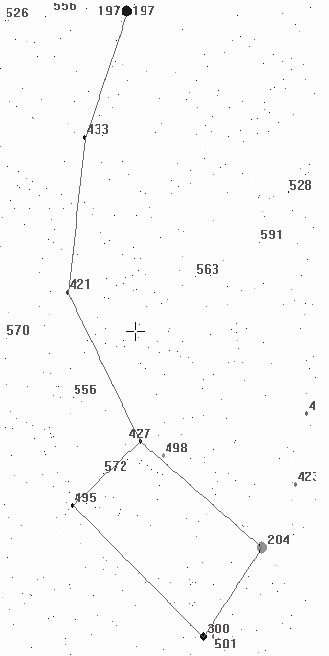Evaluating an Observing Site
Jack Kramer
As we all know, a darker site is better for deep sky observing. But often it's difficult to objectively compare one site against another, so here are a couple of ways to get a handle on it.
To evaluate an observing site for darkness, one criterion is the naked-eye limiting magnitude at the zenith. In other words, looking straight up, what is the magnitude of the faintest star you can see? Every location suffers some light loss due to atmospheric effects, which increase as we look through more of the atmosphere. Therefore, the best a site can offer is toward the zenith rather than nearer to the horizon. Locating the faintest star visible, use a reference source to determine its magnitude. (Make sure you do this in an area protected from streetlights or other sources of ground illumination.) Of course, we don't confine our observing to just objects located near the zenith. One of the commonly used references is Ursa Minor, the Little Dipper. When this constellation is well up in the northern sky, it provides an easily identifiable measure of the sky's "average" limiting magnitude. The accompanying diagram from the Guide 8.0 program shows stellar magnitudes to three digits, minus the decimal points. Thus Polaris is magnitude 1.97.
An alternative is a generalized set of criteria for judging a site's darkness. The following is a variation on one that was posted to an Internet site - it seems to be a reasonably accurate estimate:
- < 4.0: Typical urban conditions. Only the very brightest constellations are identifiable. Skyglow is so bright that northern lights would generally not be visible.
- 4.0 - 5.0: Most constellations are easily identifiable, but the Milky Way is not visible. Typical conditions found in suburbs of major cities. Passing clouds are easily seen due to being lit from ground lights.
- 5.1 - 5.5: The indistinct Milky Way faintly visible only near the zenith. Zodiacal light is invisible. M31, the Andromeda Galaxy, is barely discernible.
- 5.6 - 6.0: The Milky Way is now more easily seen, but lacks detail. M13, the globular star cluster in Hercules, can now be just glimpsed when near the zenith. The Zodiacal light is still invisible. The Milky Way from Auriga through Orion is still invisible.
- 6.1 - 6.5: The Milky Way is now obvious and some detail can be glimpsed. The Zodiacal light is now barely visible, but not obvious. The Milky Way from Auriga through Orion is faintly visible. There is still noticeable skyglow along the horizon due to distant towns and cities.
- 6.6+: Much structure is visible in the Milky Way, sometimes right down to the horizon. The Zodiacal light is an obvious cone of light. The major constellations are less obvious due to the large number of faint stars now visible. Passing clouds appear as dark masses as they block the natural airglow or the Milky Way. If any sources of man-made skyglow are visible, they are confined very low on the horizon.






